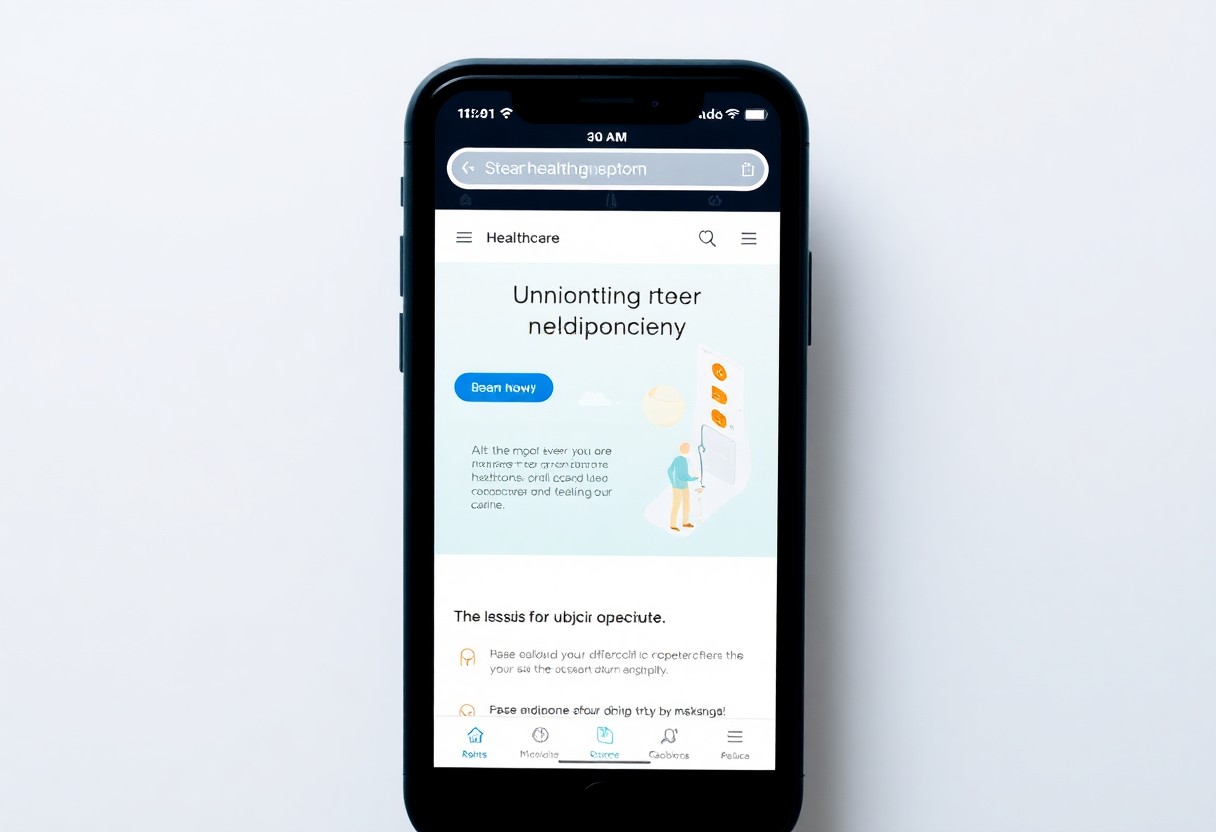

Many healthcare providers may overlook the significance of user experience (UX) in their website design, but it plays a vital role in how patients interact with your services. A well-designed website that prioritizes UX can enhance patient satisfaction, improve accessibility, and boost engagement. By understanding your audience’s needs and preferences, you can create a digital environment that not only conveys trust but also facilitates seamless navigation. In this post, we will explore how your website’s user experience can directly affect patient outcomes and your practice’s success.
For healthcare providers, understanding the needs and behaviors of website users is paramount to creating an effective online presence. Your website serves not only as a digital storefront but also as a vital communication channel between you and your patients. By grasping the nuances of who visits your site, along with their requirements and expectations, you can tailor the user experience to foster engagement, trust, and satisfaction. This understanding encompasses various demographics and their specific health-related needs, which can vary widely from age and ethnicity to socioeconomic status, influencing how they navigate your online services.
Needs assessment among diverse patient demographics lays the groundwork for an optimized website design. You must take into account factors like age, health literacy, and technological proficiency. Younger populations may seek easy access to telehealth options and mobile-friendly features, whereas older patients might prioritize straightforward navigation and clear information presentation. Each group comes with its unique set of expectations that should influence your site structure, content, and overall functionality, ensuring your resources meet them where they are.
Requirements from healthcare providers often focus on a blend of regulatory compliance, functionality, and user engagement. You need to address not only the immediate clinical objectives but also maintain adherence to guidelines like HIPAA to ensure patient data privacy and security. Additionally, incorporating features that facilitate appointment scheduling, prescription refills, and patient inquiries can enhance the patient experience while streamlining your operations. Fulfilling these requirements aligns user needs with clinic goals, driving better outcomes for both parties.
Provider-focused site design should not overlook the administrative necessities that support day-to-day operations. By integrating features that allow seamless communication between healthcare staff and patients, you can foster a more collaborative environment. This may include online chat services for quick questions, informative blog sections for health education, or easy navigation to important documents. Ultimately, a website tailored to the needs of both patients and providers enhances not only the user experience but also operational efficiency.
If you are a healthcare provider looking to enhance your online presence, understanding important user experience (UX) elements is vital. The design of your website can significantly influence patient interaction and satisfaction. A well-structured site improves trust and encourages visitors to find the information they need. You can learn more about this topic by exploring The Importance of User Experience in Medical Website Design.
Architecture is the backbone of your website, setting the stage for how users will interact with your services. An effective navigation system ensures that patients can easily find relevant information such as appointment scheduling, services offered, or contact information. Clear pathways to important sections not only minimize frustration but also encourage visitors to engage more deeply with your content. Prioritize a logical structure that accommodates both new visitors and returning patients, allowing them to navigate with ease.
Navigation is only one part of the equation; content clarity and accessibility play a vital role in user experience as well. Ensuring that your website’s information is presented in an easy-to-read format helps patients quickly understand what you offer. Use simple language and avoid jargon unless absolutely necessary, as this makes your content approachable to all visitors. Clear headings, bullet points, and visual aids can further enhance understanding while accessibility features, like alt texts for images, ensure that your site welcomes individuals with disabilities.
With the increasing importance of digital resources, it is important to ensure that your website is accessible to all users regardless of their abilities. By implementing features such as text alternatives for multimedia and properly designed navigation for screen readers, you create a more inclusive environment. A focus on content clarity and accessibility not only meets regulatory requirements but also encourages trust and improved engagement with your healthcare services.
Some of the most effective healthcare platforms incorporate foundational design principles that enhance user experience and streamline interactions. It is vital to focus on clarity and simplicity to ensure that users can quickly navigate the website without feeling overwhelmed. By applying established UX Design in Healthcare principles, you can create a more user-friendly interface that addresses the needs of patients and healthcare providers alike.
Among the elements that significantly influence user engagement is the visual hierarchy and layout of your healthcare platform. A clear visual hierarchy helps users differentiate between content types, guiding their attention toward the most important information. By using contrasting colors, bold typography, and strategic spacing, you can create a layout that effectively communicates your message. Ensuring that vital features, such as appointment scheduling or contact information, are prominently displayed can lead to increased user interaction and satisfaction.
Hierarchy in design also extends to mobile responsiveness and cross-platform compatibility. With many users accessing healthcare platforms from various devices, ensuring that your website functions well on smartphones, tablets, and desktops is vital. A mobile-responsive design adapts to different screen sizes, preserving the usability of your site across platforms. This adaptability not only enhances user experience but also broadens your reach, making it easier for patients to access your services regardless of the device they choose.
The importance of mobile responsiveness cannot be understated, as more individuals turn to their phones for healthcare needs. A seamless experience across all devices allows patients to easily book appointments, access medical records, or find vital information without frustration. Additionally, prioritizing cross-platform compatibility demonstrates your commitment to providing quality care while fostering a positive relationship with your users.
Your healthcare website must integrate several critical features to enhance user experience and streamline operations. These features not only attract patients but also maintain the trust and engagement they have with your practice. By focusing on elements like appointment scheduling systems and patient portals, you can ensure that your website serves as an effective tool in your overall healthcare delivery process. Navigating your website should be intuitive, allowing users to find the information they need quickly and efficiently.
The integration of appointment scheduling systems into your website can significantly improve the patient experience. Patients often prefer the convenience of booking appointments online, as it eliminates wait times and streamlines the process of securing a visit. Your scheduling feature should be easy to use and accessible across devices, letting patients choose their desired date and time effortlessly. Additionally, incorporating features like appointment reminders can further enhance user experience by reducing no-show rates and ensuring patients stay informed.
After implementing a robust appointment scheduling system, another imperative feature for your healthcare website is a patient portal. This allows patients to access their medical records, test results, and appointment history securely and conveniently. Secure communication channels, such as messaging systems for inquiries or follow-ups, can also be integrated within these portals, fostering a streamlined communication process between patients and providers. Making it easy for patients to get answers to their questions enhances their experience and builds confidence in your services.
Hence, the existence of a well-designed patient portal not only facilitates efficient communication but also empowers patients by giving them greater control over their healthcare journey. By enabling secure messaging and access to vital information, you create a trusted environment where patients feel valued and cared for. This not only improves satisfaction rates but also encourages ongoing engagement with your healthcare services, ultimately leading to better health outcomes.
Not only is user experience important for healthcare websites, but compliance and security measures play a significant role in their design. As a healthcare provider, you must ensure that your website adheres to industry regulations, which ultimately contribute to a secure experience for your patients. Failing to comply can lead to serious legal repercussions and damage to your reputation. Therefore, designing your website while keeping these compliance standards front and center is imperative to fostering trust with your users.
Compliance with HIPAA (Health Insurance Portability and Accountability Act) is non-negotiable for healthcare websites that handle protected health information (PHI). This means you need to embed privacy features ensuring that data is transmitted securely and is only accessible to authorized personnel. Creating intuitive interfaces that inform your users about how their information is being used and protected can significantly enhance their confidence in your services. Furthermore, you should regularly update your privacy policies and procedures to reflect any changes in regulations or technology.
For effective data protection, implementing measures such as encryption, secure user authentication, and regular security audits is of great importance. These steps not only safeguard sensitive patient information but also enhance user experience by instilling a sense of security. It’s advisable to partner with cybersecurity experts to ensure that your website meets the latest security standards and can thwart any potential breaches.
Plus, having robust data protection measures in place not only helps you remain compliant but also significantly improves your website’s overall user experience. When your patients feel that their sensitive information is secure, they are more likely to engage with your services. Additionally, you can provide educational resources that outline the steps you take to protect their data, which will further strengthen their trust in your website. Regular assessments and updates can also help you adapt to emerging threats and maintain a secure environment for your users.

Despite the myriad of design elements that you may consider when developing a website for healthcare providers, performance optimization plays a central role in shaping user experience. Ensuring that your website boasts high performance can significantly influence visitors’ perception of your services. A swift and responsive website can reduce bounce rates and promote engagement, ultimately improving patient satisfaction. To probe deeper into the influence of design on your site’s usability, take a look at The Role of User Experience in Healthcare for additional insights.
Response time is vital in the healthcare industry, where delays can lead to frustration and a lack of trust from potential patients. If your website takes too long to load, users may abandon it and turn to competitors instead. Research shows that even a one-second delay in loading time can result in a significant decrease in user engagement. This highlights the importance of optimizing every aspect of your site—images, scripts, and overall code—to ensure your website operates at peak performance and meets the expectations of your visitors.
To provide an exceptional user experience, your website should feature an efficient search functionality that allows users to find relevant information swiftly. The ability to locate desired services, healthcare professionals, or valuable resources can greatly enhance how users perceive your website. If your search function yields slow results or provides inaccurate information, you risk alienating your audience and compromising the overall effectiveness of your digital presence.
The integration of advanced search algorithms can assist users in easily navigating your site. As you optimize the search functionality, aim to include filters and sorting options that make it simple for patients to find what they need. By emphasizing accuracy and speed, you enhance the experience for users, thereby increasing their likelihood of returning to your site or utilizing your services in the future. Ultimately, a well-functioning search feature reflects a commitment to patient-centered care, which is crucial in today’s healthcare landscape.
Summing up, the impact of user experience on website design for healthcare providers cannot be overstated. A well-designed website not only enhances the way patients interact with your services but also builds trust and credibility within the community you serve. By prioritizing user-friendly navigation, quick access to imperative information, and a responsive design, you create a positive environment that encourages patients to engage with your practice. This, in turn, can lead to improved patient satisfaction and advocacy.
As you move forward with your website design strategy, consider incorporating feedback from your patients and continually analyzing user behavior. This data can help you make informed decisions that enhance user experience over time. Investing in a thoughtful and intuitive web presence can make a significant difference in how effectively you connect with your patients, ensuring that your healthcare services are accessible, informative, and user-centered.



